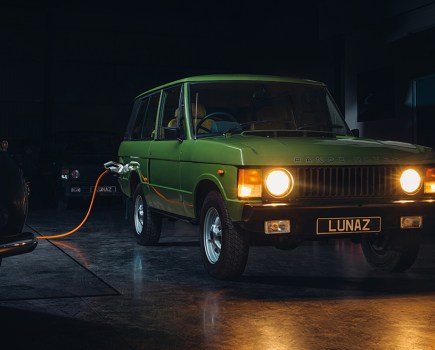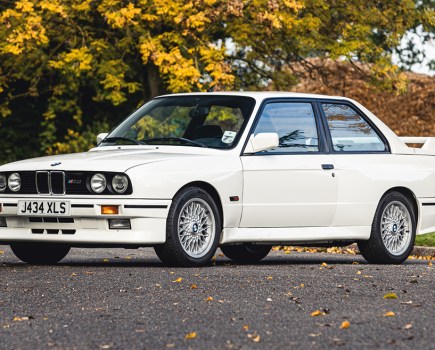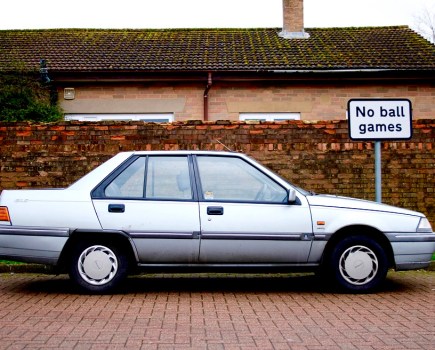Diesel scrappage scheme rumours are doing the rounds again – this time in The Telegraph newspaper. An incentivised initiative to clean up the air in the most polluted UK cities could see thousands of modern-diesel classics consigned to the scrapyard.
The Telegraph’s report relied on an anonymous government source for information; they told the paper that transport secretary Chris Grayling’s proposal to reduce the number of diesels taking to the road had divided MPs.
Some argued the real pollution issue lay with diesel-powered buses, HGVs, farm vehicles and ships rather than cars – others (like former transport secretary Patrick McLoughlin) suggested tax increases on diesels in favour of petrols and ‘cleaner’ alternatives.
‘Eighties and ‘Nineties diesel cars are usually kept by owners for utility purposes or for reasons of reliability. Many classic Land Rovers (still the most stolen classic British off-roader – see opposite page) are still extant in Series 3, County and Defender form and still in regular use. Other classics were converted to diesel power because of their fuel economy; as Classic Car Buyer found recently, London councils are slowly militating against compression ignition cars regardless of their date of build (see seperate box).
‘NOT EFFECTIVE’
No firm plans have been put into place – indeed, the Fourth Report from the Commons Select Committee (2015-2016) stated that: “The benefits of introducing a scrappage scheme in terms of improved air quality would need to be weighed against its effectiveness, the additional Exchequer cost and wider economic impacts to ensure value for money for the taxpayer.”
“A high-level cost estimate was carried out, looking at offering grants for scrappage of the dirtiest vehicles and this determined that there is no proportionate way to appropriately target such a measure to the areas where it would be most needed; and as such, it would not be an effective use of significant resources.
“The use of Clean Air Zones is a more targeted and proportionate approach to tackle the emissions.” The Telegraph’s informant suggests otherwise – and Clean Air Zones remain a hurdle the classic car movement will have to cross in the near future, especially when devolved councils take the reigns of their own pollution schemes.
The situation remains unclear abroad too – as Classic Car Buyer discovered when we put our concerns about the Parisian Crit’Air scheme to the Fédération Française des Véhicules d’Epoque (FFVE) via the Federation of British Historic Vehicle Clubs (FBHVC).
London’s poor air quality – undoubtedly worsened by its scores of private hire vehicles (PHV), will finally see the latest iteration of its iconic black taxi cabs next year. The London Taxi Company is currently putting the finishing touches to its brand-new hybrid TX5; cabbies were promised £150 million in the 2016 Autumn Budget to switch over to the new taxis in conjunction with a manufacturer trade-in scheme.
PARTICULATE PARTICULARS
A growing concern for all vehicles, including classics, is the contribution of tyre and brake dust to air pollution. Studies into particulate matter have been growing in urgency over the past five years – the smaller the particle emissions from vehicle exhausts and movement, the more chronic air quality and breathing issues become.
In short, tax breaks and policy have been ignoring the most damaging aspects of air pollution. Diesels are particularly bad in this regard; in previous reports, the Department for Environment, Food and Rural Affairs (DEFRA) argued that studies and Type Approval emissions tests lacked the appropriate measurements required to monitor the most harmful particulate matter.
Worries have been growing since 1996, when tests spotted a marked increase in the smallest (nanometre) particulate matter from the then-newest range of diesel engines.
More recently, a growing pool of research suggests that brake and tyre wear – the dust raised from their operation, known as ‘resuspended particulate matter’ – plays a significant role in worsening air quality.
DEFRA’s research continues for the time being, but reports published as early as 2012/2013 suggested that as much as half of road transport particulate pollution comes from tyre wear and other friction materials.
While classic vehicle usage accounts for a fraction of those figures – and while an even smaller proportion of the 1,039,950 vehicles registered as historic by the National Historic Vehicle Survey in 2016 are on the road at the same time, older tyre and brake pad designs may not be helping matters.
As manufacturers like Michelin and Lockheed-AP (now Caparo-Liberty) still produce a great deal of older designs to keep classics driving, changing gear and stopping, we want the historic vehicle movement taken out of the particulate matter argument as soon as possible. With worries about roadworthiness testing and insurance liability still on the table, the last thing legislators need is another source of ammunition against classic vehicles…





